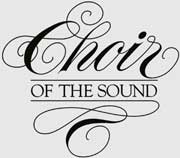Hope is more like a muscle than an emotion. —Amanda Ripley
You must be the change you wish to see in the world. —Mahatma Gandhi
In our previous concert, The Armed Man: A Mass for Peace, we led our audience through the weaponization of fear, the drive to war, and the horror that follows. We looked into the darkness and rejected it; received absolution; and sang of a better future. In this next show, Weaving a New World: Songs of Hope and Change, we take up the questions of what comes next, and how to get there from here.
Naming a problem, as Jenkins does in The Armed Man, is the first step in solving it, but is not a place to linger. Author and journalist Amanda Ripley realized she was spending less and less time reading the news, because the majority of coverage stopped at describing serious issues, which gave her a paralyzing sense of despair. When she shared this in an opinion column in The Washington Post, not only did a large number of readers share their own sense of being “bludgeoned into fatalism” by new coverage, many suggested a solution: seeking out stories of people who were doing something about the serious issues. She now feels that hope is a necessity when following world news, and goes on to define hope as “goals plus a road map plus willpower.”1
As a choir, we naturally turn to music to find our roadmap and goals. In choosing material for this show, Artistic Director Jeremy Matheis and Associate Director Anjali Chudasama started with songs that became anthems for communities uniting to resist their oppressors.
Mahalia Jackson and Pete Seeger both drew on traditional gospel songs and applied them to the civil rights movement in 1950s America. Similarly, during protests against apartheid in South Africa, Nelson Mandela’s supporters used the traditional song “Shosholoza,” about the train that brought workers to the goldmines, to describe their movement toward freedom. Our roadmap starts with using our voices to draw people together, and inspire them.
We find the goals for our hope in such joyous songs as “A Million Dreams” from The Greatest Showman and “I Can See Clearly Now” by Johnny Nash, both arranged for this show by choir members. Singing about emerging into sunshine and blue skies, and seeing our imaginings become real, fills us with the joy we need to keep hope alive.
Music has always been a powerful tool for building communities, strengthening resolve, and inspiring change. This spring we are picking up that tool, and flexing the muscles of our hope. We invite you to this show not just to entertain you with our songs, but to include you in our community, and encourage you to feel your own power. There is a way forward; the train is picking up speed. Change can come, if we are willing to be the change.
1 “This element is critical to human flourishing – yet missing from the news” Amanda Ripely, Washington Post opinion column, March 23, 2023 https://www.washingtonpost.com/opinions/2023/03/30/amanda-ripley-hope-news/

